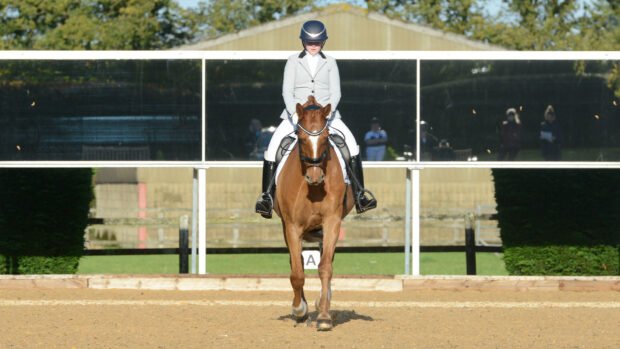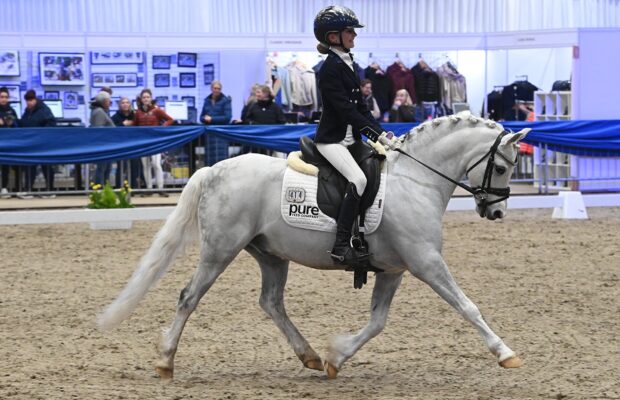Who better to look to for training tips than Olympic gold medallist Laura Tomlinson? From helping prevent your horse rushing to building a stronger bond, we share some of her invaluable training advice…
Laura Tomlinson training tips
How can I establish a better bond with my horse?
“Be sympathetic and supportive when your horse is nervous or stressed and listen to him,” says Laura. “Trust is built when a horse knows you won’t ask more of them than they can give, but you enable them to be able to give more by training them well. Encourage good outcomes with praise, and treat bad outcomes with thought, not reprimand.
“Gain positive experiences with your horse by having fun outside of your training: ground work, hacking, going for a canter or gallop, or polework.”
How do I make a horse quicker to my aids?
“Be quick yourself,” advises Laura. “Use a quick half-halt, quick release, with quick legs, not a dull, constant press that the horse can lean against or become numb to. Quick fire transitions also help your horse think faster and start to become more responsve.”
How can I prevent my horse rushing?
“Ride squares – keep bringing your horse back in each corner with a little inside bend and hold the horse to slow down. As you come out of the corner give with your hands, and repeat in the next corner. Your horse should start to wait and listen, and you can give more in between as you know your next corner is coming,” says Laura.
“Teach your horse to listen to your seat and keep your leg on so he is genuinely through and engaged.”
What can I do to improve my horse’s medium work?
“Ride out of a corner collected, compress some energy and then on the long side gradually release it, while ‘lifting’ the horse in front and pushing your shoulders away from your hands to create space for the withers to come up,” says Laura. “Push your horse into a strong, steady contact to give him balance while allowing the neck to take a couple of inches of length.
“Just go for 15-20m at first, then re-balance and go again. Aim for quality of steps, not quantity, and build up how long you and your horse can hold a bigger extension without running and losing balance.”
Article continues below…
You might also be interested in:

Laura Tomlinson: ‘I want to show my girls that you can be a very present mum and be at the top of your game at the same time’
Laura reveals how she juggles being a mother and competing at the top of her sport

Standby for life envy: behind the scenes with Laura Tomlinson and Lara Griffith
Last year's Olympic dressage travelling reserve Lara Griffith shows Horse & Hound around the Cotswold yard where she is based

8 training gems from Carl Hester that could transform your dressage scores

Subscribe to Horse & Hound magazine today – and enjoy unlimited website access all year round
How can I improve my seat to appear more still in the saddle?
“This comes from the movement being absorbed by your body, so you are moving with the horse and therefore look still and in harmony,” explains Laura. “Your hips and pelvis absorb the movement of your horse’s back and your hands absorb the movement in front.
“Don’t focus on sitting like a statue as this can make you rigid and tense. Think about going with the flow and absorbing the movement of the horse so it’s comfortable for you and for him.”
What is the best way to help my horse relax when he is very fresh?
“Stick to a system; horses like routine as it makes them feel secure,” advises Laura first of all. “Find ways to get your horse’s attention in a positive way, so there is less time for spooking or being silly, such as a bit of lateral work or transitions – things that help to relax the back so the tension and silliness doesn’t become a vicious cycle.
“Make sure you still ride forwards; fresh horses tend to get worse if they feel held back.”
Horse & Hound magazine, out every Thursday, is packed with all the latest news and reports, as well as interviews, specials, nostalgia, vet and training advice. Find how you can enjoy the magazine delivered to your door every week, plus options to upgrade to access our H&H Plus online service which brings you breaking news as it happens as well as other benefits.




